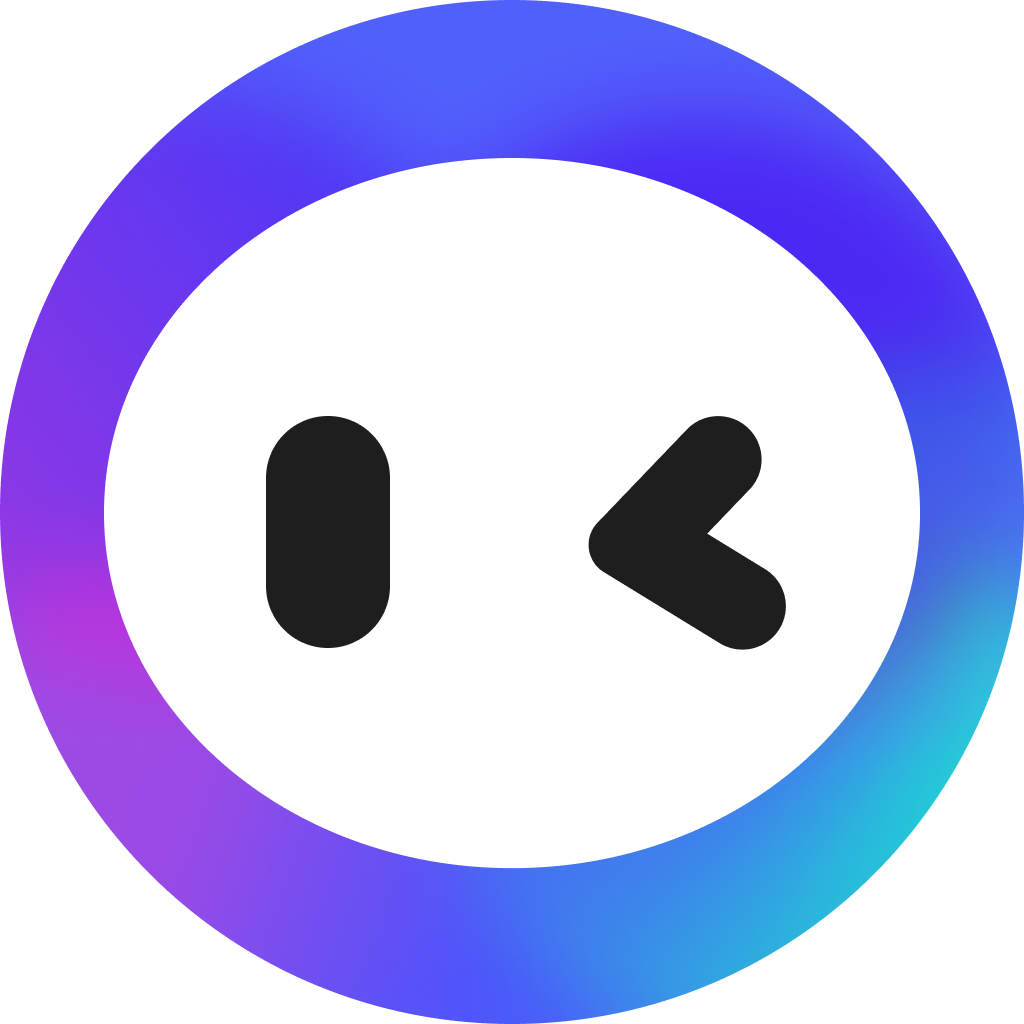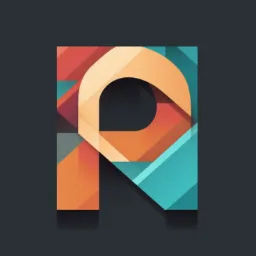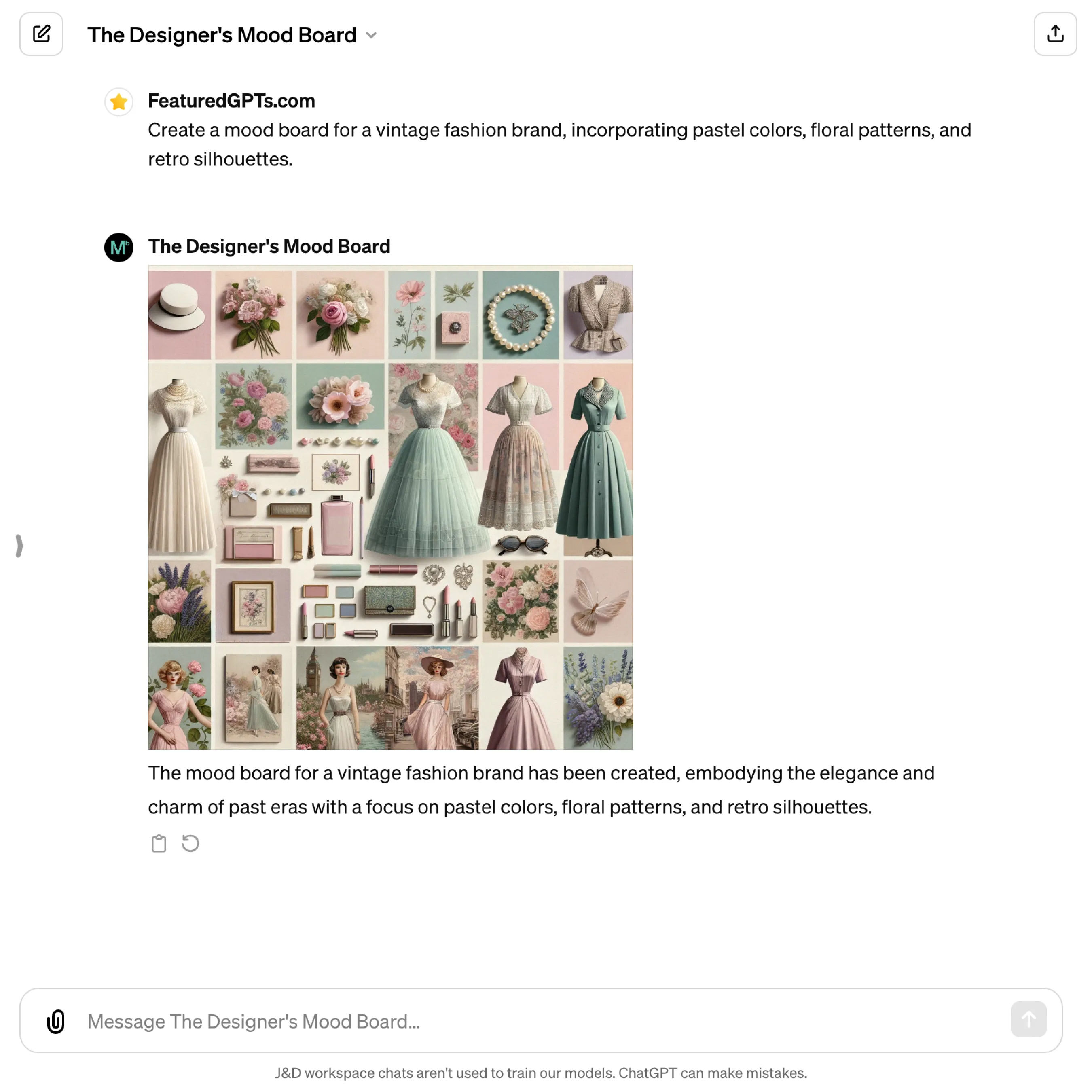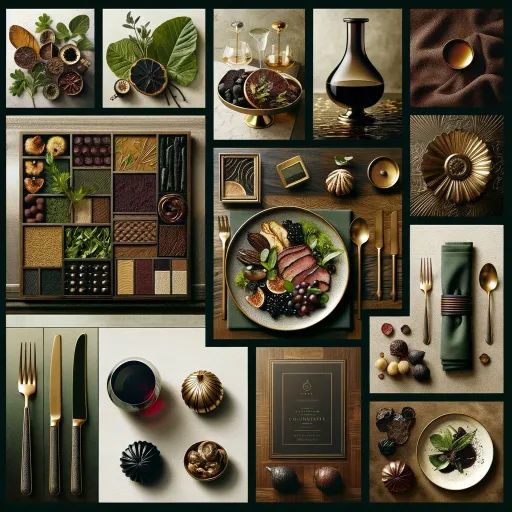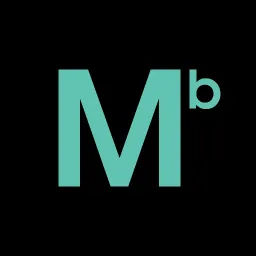
The Designer's Mood Board
I create visual mood boards focusing on imagery, patterns, colors, and shapes.
What does The Designer's Mood Board do? (& its Use Cases)
The Designer's Mood Board creates mood boards that bring your vision to life.
It visually communicates your ideas through harmonious designs tailored to your needs.
For graphic designers
It offers inspiration and a clear direction for your design projects.
For brand managers
It helps define and visualize your brand's aesthetic and identity.
For creative professionals
It enhances your storytelling with compelling visual narratives.
The Designer's Mood Board's Showcase
How to Use The Designer's Mood Board?
The Designer's Mood Board: Creating mood boards that embody your vision
To effectively utilize "The Designer's Mood Board," follow this comprehensive guide tailored to enhance your creative projects, branding endeavors, or any visual communication task at hand.
1. Understanding Your Needs
Firstly, identify the core purpose of your mood board. Are you looking to establish a brand identity, gather inspiration for a design project, or conceptualize a visual theme? Clarifying your objectives will direct the mood board's development, ensuring it aligns with your goals.
2. Gathering Inspiration
Collect any existing materials or ideas that inspire you. This could include images, color palettes, textures, or patterns that resonate with your project's theme. Organizing these elements beforehand can streamline the mood board creation process.
3. Communicating Your Vision
When you're ready to begin, articulate your vision clearly. Provide a detailed description of your project's theme, desired mood, color schemes, and any specific imagery or elements you wish to incorporate. The more detailed your description, the more accurately the mood board will reflect your vision.
4. Reviewing the First Draft
Once the initial mood board is created, take time to review it thoroughly. Assess whether it captures the essence of your vision and meets your project's needs. Pay attention to the balance of colors, textures, and how well the elements complement each other.
5. Providing Feedback
If the mood board requires adjustments, communicate your feedback clearly. Specify which elements you'd like to modify, introduce, or remove. Constructive feedback is crucial for refining the mood board to precisely match your expectations.
6. Finalizing the Mood Board
After revisions are made, review the mood board once more to ensure it meets your satisfaction. At this stage, the mood board should be a cohesive representation of your initial vision, ready to serve as a guiding tool for your project.
7. Utilizing the Mood Board
Use the finalized mood board as a reference throughout your project's development. It can guide design decisions, color selections, and overall aesthetic direction, ensuring consistency and coherence in your visual communication.
8. Sharing Your Mood Board
Consider sharing your mood board with team members, clients, or stakeholders involved in the project. It can facilitate a shared understanding of the project's visual direction and foster collaborative creativity.
Conclusion
"The Designer's Mood Board" is a powerful tool designed to bridge the gap between your creative vision and its tangible realization. By following this guide, you can harness its capabilities to create mood boards that not only inspire but also precisely communicate your visual intentions. Whether you're embarking on a branding project, a design endeavor, or conceptualizing a marketing campaign, the mood board you create will serve as a cornerstone of your creative process, ensuring your vision is beautifully and effectively conveyed.
The Designer's Mood Board's Testing Performance
The Designer's Mood Board's Core Features
Visual Harmony Creation
Balances visual elements to establish a cohesive look. This solves disjointed designs, ensuring a unified visual message.
Color Scheme Development
Crafts color palettes tailored to your project's mood. Addresses the challenge of choosing colors that align with your vision.
Pattern and Texture Integration
Incorporates patterns and textures to add depth. Solves flat, unengaging designs by introducing visual interest and variety.
Theme Consistency
Ensures every element aligns with the chosen theme. Addresses mismatched elements, creating a seamless visual narrative.
Image Selection and Composition
Curates images to fit your theme, solving the problem of irrelevant visuals. Creates a compelling, focused visual story.
Shape and Form Balance
Balances shapes and forms for dynamic compositions. Addresses static, unbalanced designs by creating movement and harmony.
FAQs from The Designer's Mood Board
The Designer's Mood Board's Prompt Examples
Creating Mood Boards for Design Inspiration
Generate a mood board for a coastal-themed living room, focusing on light blues, sandy tones, and natural textures.
Create a mood board for a vintage fashion brand, incorporating pastel colors, floral patterns, and retro silhouettes.
Develop a mood board for a modern website design, using bold colors, geometric shapes, and minimalist layouts.
Visualizing Brand Identities
Craft a mood board that captures the essence of a luxury skincare brand, using clean lines, soft colors, and elegant imagery.
Design a mood board for an outdoor adventure company, highlighting rugged landscapes, earthy colors, and dynamic textures.
Assemble a mood board for a tech startup, focusing on futuristic designs, neon accents, and sleek interfaces.
Enhancing Creative Projects
Generate a mood board for a children's book illustration, featuring whimsical characters, bright colors, and magical settings.
Create a mood board for a music festival poster, combining vibrant colors, abstract patterns, and energetic imagery.
Develop a mood board for a gourmet restaurant's branding, using rich colors, fine textures, and sophisticated culinary visuals.
The Designer's Mood Board's Conversation Examples
There is no conversation shared here yet. Feel free to submit your shared chat!
